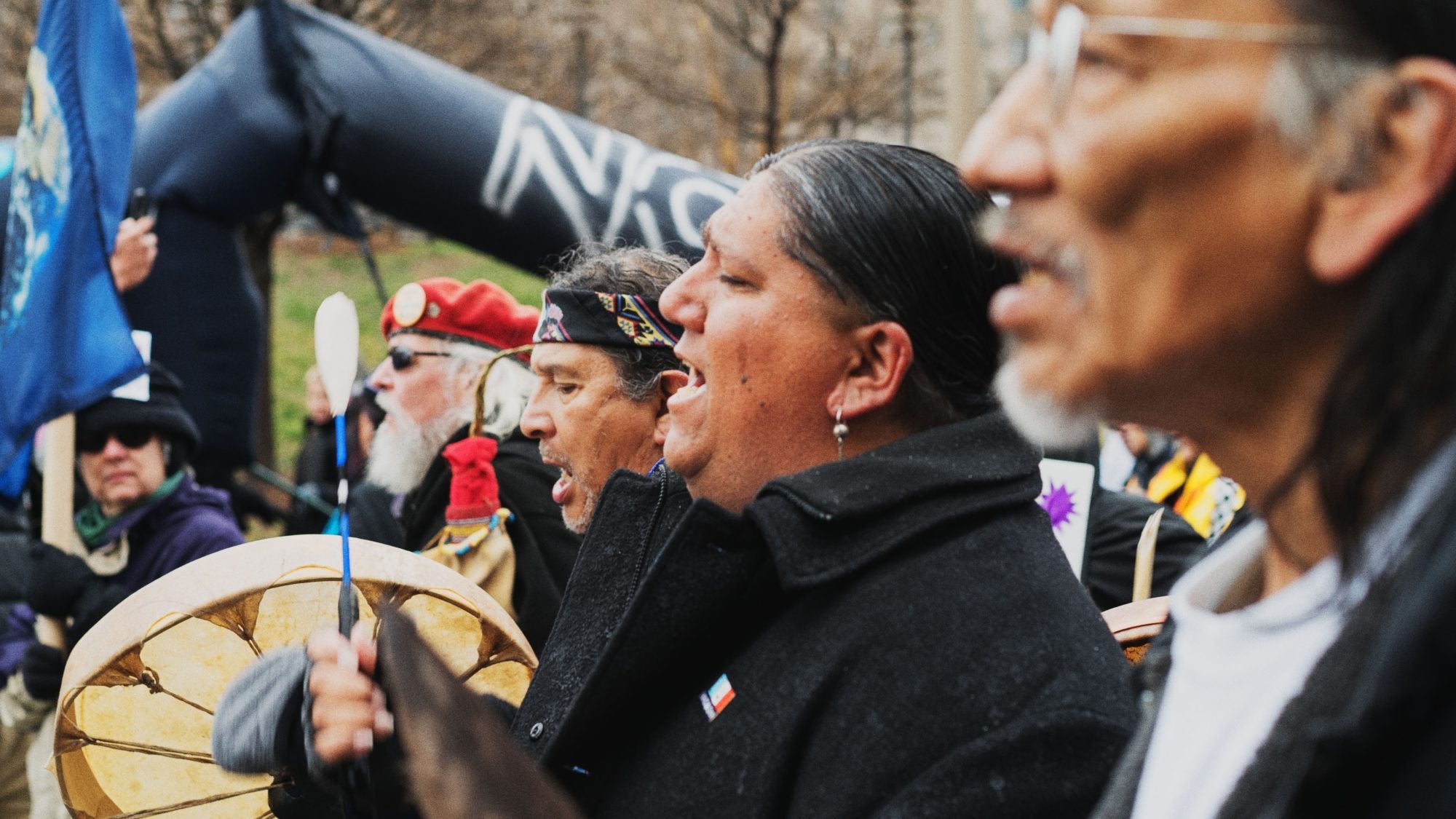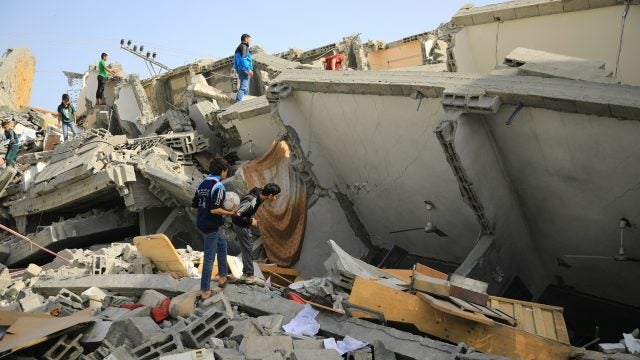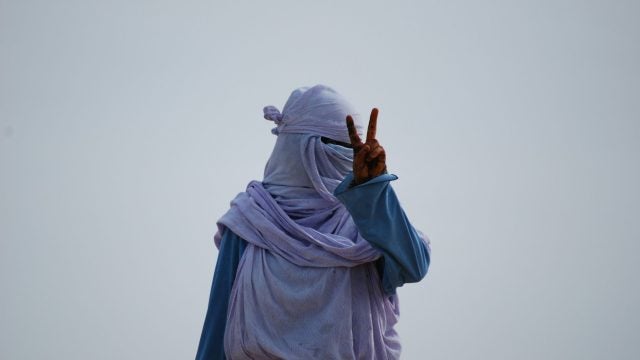
Title: Martial Indigeneity: Deconstructing “Decolonization” in International Relations
Constructivists often criticize mainstream International Relations (IR) theories for their colonial approach to the cultures, knowledge, and agency of Indigenous peoples. Despite their intentions, constructivist approaches fail to decolonize IR. The constructivist construction of Indigenous peoples as embodiments of non-violence, cooperation, and empathy and as passive victims of violence should be replaced by a more nuanced approach to the roles of Indigenous people in war and violence–what we define as “martial indigeneity.”
Constructivists wrongly portray the Indigenous as ultrasocial people
Many claim that decolonizing International Relations (IR) requires moving past mainstream theories, especially realism and liberalism, which have ignored the effects of colonialism on Indigenous peoples, excluded their knowledge, and diminished their political agency because of state-centric assumptions about “who counts in International Relations.” However, constructivist approaches also reproduce colonial narratives about Indigenous peoples in IR. This is particularly apparent in works about Indigenous war and violence. Constructivist IR theorists often construct Indigenous peoples as communities built on pacifist principles of non-violence, empathetic dialogue, and cooperation and as the victims of violence rather than the perpetrators. I argue that decolonizing IR demands a more nuanced understanding of the roles of war and violence in Indigenous communities—“martial indigeneity.”
Constructivists argue that “Indigenous politics is driving a transformational and revolutionary change in the theory and practice of International Relations.” One leading constructivist, Beverly Crawford, even argues that Indigenous peoples have prevented the outbreak of interstate war in the Arctic. Realism and liberalism focus exclusively on the agency of states and international organizations and fail to explain “Arctic peace,” Crawford asserts. According to Crawford, Indigenous peoples are “ultrasocial” and characterized by “empathy, cooperation and other-regarding” capabilities. Without Indigenous ultrasociality and governance in the Arctic, the Arctic would, she argues, most likely already have suffered a great power conflict. Therefore, Crawford believes that safeguarding “Arctic peace” depends on empowering Indigenous peoples. However, her constructivist portrayal of the Indigenous as ultrasocial peoples is no better than realist and liberal neglect of Indigenous peoples.
Indigenous peoples are adept at geopolitics and warfare
In his recent book, Indigenous Continent, historian Pekka Hämälainen provides a detailed account of the military and geopolitical supremacy that Indigenous peoples achieved across North America during their 17th-century conflicts with European settlers. With the advent of settler colonialism, Indigenous peoples, such as the Iroquois and the Sioux, outfought and outmaneuvered colonial forces from Spain, Britain, France, and the Netherlands, adeptly using geopolitics to their advantage.
Indigenous peoples waged war, however, not only against colonizers. The Inuit of Alaska waged vicious wars on their southern neighbors, the Cree, for hundreds of years until Cree acquisition of firearms from settlers ended the series of conflicts. There has been strikingly little ‘ultrasociality,’ to use Crawford’s essentializing term, in Inuit-Cree relations. The realities of such violent conflicts between Indigenous peoples undercut constructivist representations of Indigeneity, which misrepresent the complexities of Indigenous cultures.
Western academics may avoid researching Indigenous warfare due to the fear that representing Indigenous peoples as violent or warlike legitimizes colonial narratives. But as the anthropologists Richard Chacon and Ruben Mendoza highlight, warfare was fundamental to Indigenous cultures long before contact with Europeans. Indeed, they claim that denying the prevalence of Indigenous warfare is itself “a vestige of colonial repression–depriving native warriors of their history of armed resistance.” Indigenous peoples should be recognized for their courage and their prowess in fighting to defend themselves. Contemporary racism denies these capacities.
The United Nations Declaration on the Rights of Indigenous Peoples (UNDRIP) seeks to protect Indigenous peoples from genocide, ethnocide, or other acts of violence aimed at their destruction. Article 8 of UNDRIP that states must prevent the spreading of “propaganda designed to promote or incite racial or ethnic discrimination directed against [the Indigenous].” Ignoring or denying the existence of war and violence in Indigenous cultures erases elements of those cultures, fostering the cultural destruction that the UN seeks to prevent.
Constructivist constructions of the Indigenous damage their interests
The ability to deploy organized violence is integral to Indigenous abilities to defend their interests. A tabletop exercise conducted in 2018 by the RAND Corporation cast Indigenous peoples’ opposition to exploitation in the Arctic as a potential “wild card,” threatening to derail the extractivist strategies of nearby states. For example, opposition by the Saami, an indigenous group inhabiting northern Scandinavia and northern Russia, to mining projects in the Finnish Arctic has undermined the state of Finland’s attempt to market Arctic territories as an attractive site for mining corporations. A 2021 Fraser Institute report concluded that many mining companies have avoided doing business in Finland due to conflicts with Saami communities.
However, Indigenous efforts to defend themselves are threatened by IR theorists’ essentializing portrayals of the Indigenous as exemplars of peace, empathy, and cooperation. Such misrepresentations contribute to the Indigenous being associated only with “soft politics” and excluded from forums where hard political issues are at stake. NATO, for instance, has ignored Indigenous peoples while expanding its presence in the Arctic since the Russian invasion of Ukraine. This exclusion can prevent the Indigenous from defending their lands. Military issues are not recognized as Indigenous issues even when they concern the occupation of Indigenous lands. As one of the leaders of the Gwich’in (an indigenous people inhabiting northwestern North America), Edward Alexander put it recently:
Hard security issues, whether they NATO or the States, or Canada, or in Russia—if it does not include Indigenous people at those tables, it is going to have negative impacts and implications for Indigenous people. So, NATO should include us in their discussions … NATO should ensure that they have the consent of the Indigenous people of the Arctic, so things are done in an ethical way, and also in a way that promotes a better relationship for long-term security.
The UN recognizes that protecting Indigenous rights requires policies that protect Indigenous lands from militarization. The UN must adhere to this goal by empowering Indigenous communities to shape hard power through international policies. IR scholars can help this cause by embracing martial indigeneity–abandoning the narratives that incorrectly construct Indigenous peoples as pacific and Indigenous politics as “soft.” Only then can IR move past its long history of exploitation, exclusion, and discrimination against Indigenous peoples.
…
Julian Reid is a Professor of International Relations at the University of Lapland, Finland. Previously he taught at King’s College and SOAS (both University of London), as well as Sussex University. He has been a Visiting Professor and Research Fellow at the University of Bristol and Virginia Tech. His published books include Becoming Indigenous: Governing Imaginaries in the Anthropocene (coauthored with David Chandler).
Image Credit: Wikimedia Commons
Recommended Articles

This piece examines the UK government’s proscription of Palestine Action under the Terrorism Act, situating it within a broader trend of shrinking space for public dissent. It argues that the…

This article analyses the distortions of the International Humanitarian Law (IHL) notion of proportionality in the context of the Israel-Gaza war. It discusses Israel’s attempts to reinterpret proportionality to justify…

The escalating women’s rights crisis in Afghanistan demonstrates a gap in international legal protections of the rights of women and girls. The international community should fill this gap by making…